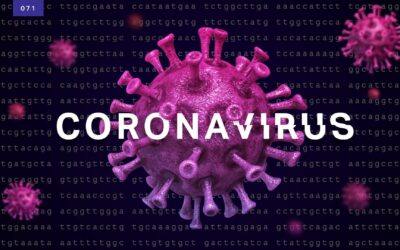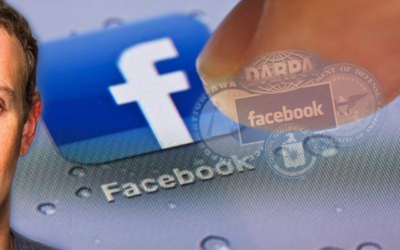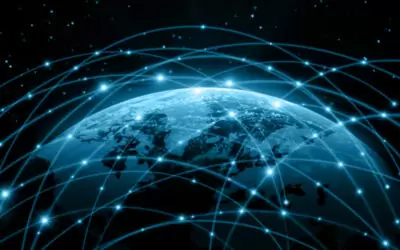A gathering of experts on artificial intelligence becomes a search for deeper meaning
Hundreds of the world’s brightest minds — engineers from Google and IBM, hedge funds quants, and Defense Department contractors building artificial intelligence — were gathered in rapt attention inside the auditorium of the San Francisco Masonic Temple atop Nob Hill. It was the first day of the seventh annual Singularity Summit, and Julia Galef, the President of the Center for Applied Rationality, was speaking onstage. On the screen behind her, Galef projected a giant image from the film Blade Runner: the replicant Roy, naked, his face stained with blood, cradling a white dove in his arms.
At this point in the movie, Roy is reaching the end of his short, pre-programmed life, “The poignancy of his death scene comes from the contrast between that bitter truth and the fact that he still feels his life has meaning, and for lack of a better word, he has a soul,” said Galef. “To me this is the situation we as humans have found ourselves in over the last century. Turns out we are survival machines created by ancient replicators, DNA, to produce as many copies of them as possible. This is the bitter pill that science has offered us in response to our questions about where we came from and what it all means.”
The Singularity Summit bills itself as the world’s premier event on robotics, artificial intelligence, and other emerging technologies. The attendees, who shelled out $795 for a two-day pass, are people whose careers depend on data, on empirical proof. Peter Norvig, Google’s Director of Research, discussed advances in probabilistic first-order logic. The Nobel prize-winning economist Daniel Kahneman lectured on the finer points of heuristics and biases in human psychology. The Power Point presentations were full of math equations and complex charts. Yet time and again the conversation drifted towards the existential: the larger, unanswerable questions of life.
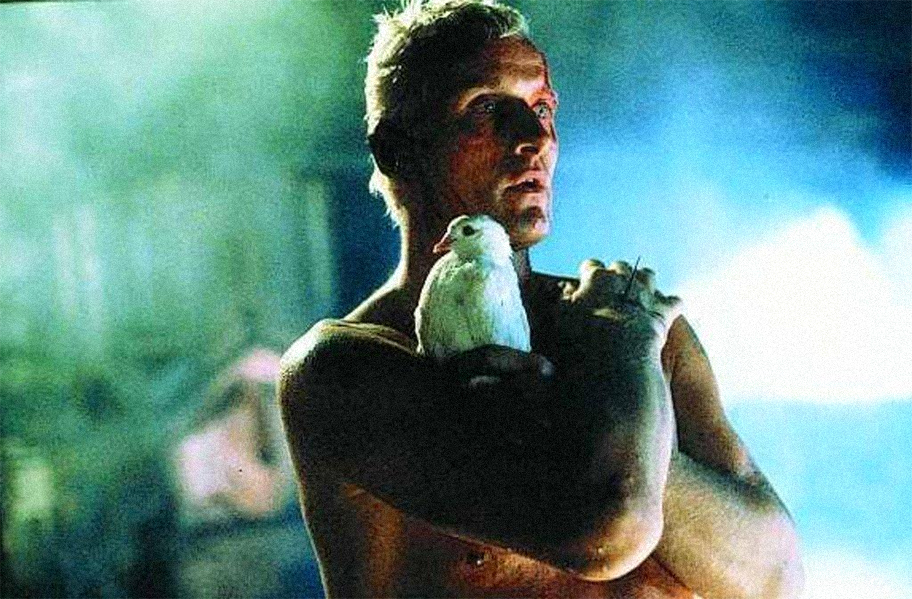

Inside the Masonic Temple the morning light shone through a glorious set of stained glass windows. The work, completed in 1957 by Emile Norman, charts the progress of industry, from covered wagons to high speed trains, from sailing ships to cruise liners. It’s a celebration of civilization, interwoven with the beauty of the natural world, and above it, the all seeing eye of God.
That same year Norman completed his masterpiece, the mathematician John von Neumann passed away. It was von Neumann who first spoke of a technological singularity. He imagined the pace of scientific progress would grow faster and faster, until it becomes impossible for humans to keep up with the change. By singularity, von Neumann was referring to a spacial anomaly, like a black hole, where the traditional rules of physics do not apply.
While there are numerous versions of what the future will become in the wake of the Singularity, the unifying principle is that, beyond this moment, the universe as we know it will be dramatically altered. And so the Summit is a sort of nirvana for hyper-intelligent dreamers: sci-fi fans with PhDs, big bank accounts, and boring day jobs, who love to debate radical visions of the future. Making a religion of rationality, it turns out, can lead some very smart people to embrace some insane-sounding ideas.
Laura Deming, who began attending MIT at the precocious age of 14, was one of four Thiel Fellows to speak onstage. Peter Thiel, the billionaire hedge fund manager, tech investor and founder of PayPal, is one of the biggest donors to the Singularity Institute. His fellowship offers the world’s brightest minds $100,000 each to drop out of school and pursue their bold ideas. Deming, who at 18 has already finished college, electrified the crowd with her short talk.
“There is one fact that never fails to infuriate me. Every day 150,000 die of a disease that we ignore. I remember when I was eight, I decided that I wanted to work on curing aging,” Deming began. “It was watching my grandma try to play with my brother and I when arthritic joints made just walking painful.” Deming’s voice grew husky, and her eyes watered with tears. “I remember clearly the death of three grandparents, three amazing people, from this awful, inexorable process that we have somehow come to view as something normal, natural, and beautiful… to be celebrated.” She paused to collect herself. “At least outside this room, that seems to be the consensus.”
“Just think how far we’ve come in a century,” said Deming, her cheeks flushed with excitement. “Only a century ago, the nature of genetic code was still a mystery. Now we’re creating pocket-sized DNA calculators and swapping biological circuitry like it’s Lego blocks.” Like many at the conference, her faith in a brighter future was grounded in the continuing acceleration of scientific progress. “If we succeed, we will have turned the most awful paradigm that we know on its head. The inevitability of death.”
The crowd burst into rapturous applause.
I wondered if The Singularity might serve as a sort of substitute for faith among the Silicon Valley set who felt uncomfortable with some of religion’s mystical beliefs. “The Singularity resolves a lot of the problems that religion irons out for humans,” said R.U. Sirius, a longtime attendee I chatted with. “The contradictions, the pains and suffering of living: these are deeply troubling for people who pride themselves on their rational minds. Here you can find a vision of absolute transcendence, but one that uses as its foundation long-term projections that are at least somewhat grounded in science.”
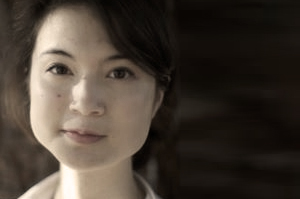
Laura Deming
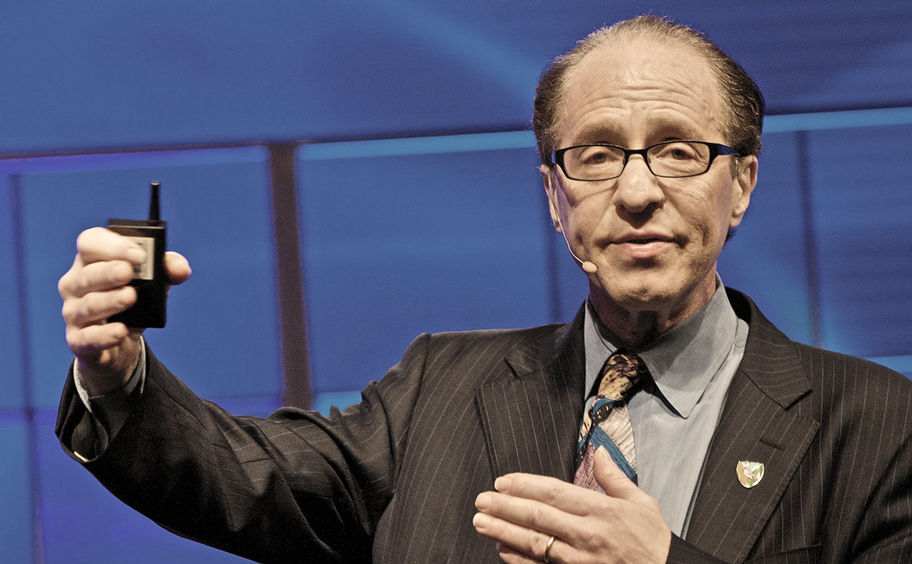
The prophet of progress
When the conference broke for lunch, I wandered outside to California Avenue. The area was clean, bright, and quiet. Across the street the high steeple of Grace Cathedral caught the afternoon light. At the corner, the road descended at a frightening angle, sloping off like the inverse of one of the many charts projected on the screen that morning to display the astounding rate of our technological gains.
The audience at the conference was a pleasant polyglot: unassuming geeks in t-shirts adorned with coding jokes, bankers in Oxford shirts, freaks with gelled mohawks, crossdressers in leather boots, and one man in Victorian breeches and top hat. Grabbing a seat at an outdoor table, I caught the tail end of a discussion between several programmers and a pair of quants from a hedge fund. They were talking about the amount of trading in today’s stock markets that is governed entirely by computer algorithms, moving at light speed, with little or no human involvement. “You want to see a world where computer intelligence is leaving humans in the dust,” the hedgie boasted. “It’s already here.”
While the concept of the Singularity has been around since the 1950s, it failed to catch on with the mainstream until 2005, when the prolific inventor and polymath Ray Kurzweil published The Singularity is Near. It was an update to his 1999 work, The Age of Spiritual Machines, which became a bestseller in Amazon’s science section. But The Singularity is Near broke through to become a New York Times bestseller, largely by mixing Kurzweil’s earlier notions of sentient machines with new predictions about the possibilities for eliminating diseases like cancer and Alzheimer’s and, eventually, overcoming death itself.
Kurzweil is the Singularity’s optimistic prophet. As a young inventor, he set out to help the blind to see and the mute to speak. Incredibly, he accomplished these lofty goals, creating technologies that touched many lives, and making himself a millionaire many times over the process. So perhaps it’s not surprising that he truly believes he can solve the vexing problem of mortality, and even, as he explains in the documentary Transcendent Man, bring his dead father back to boot. In Kurzweil’s vision of the future, we can merge our brains with computers, giving us a near godlike intelligence and the ability to back up our memories and thus live forever. This new species of man-machine will spread out across the universe, a super race on an infinite quest for knowledge.
Kurzweil’s most important and controversial belief is that sciences like biology and medicine are increasingly becoming “information technologies.” This would mean the same principles of accelerating returns which have played out in the world of computers would now hold true for you and me: Moore’s law will apply equally mitochondria and microchips. As soon as Kurzweil finished, a hand shot up in the front row. John Linnemeier, a frail man with thinning white hair, grasping a ski pole for a cane, called for the microphone.
“I just want to ask, you and I are both pretty old, what if we don’t make it to the Singularity? Do you have any plans for that?”
Kurzweil gets this question a lot. While his three health books have been a “wake up call” for baby boomers, he explains, the generation won’t necessarily make it. “But before 2030 we will be adding more than a year every year to our life expectancy. Of course you could be hit by the proverbial bus tomorrow, but we are doing something about that too, with Google’s work on self-driving cars.” He didn’t mention it onstage, but Kurzweil also sells his own line of supplements. “You don’t want to be the first person in line not to make it into the theater,” he joked, to laughter and cheers from the crowd.
After Kurzweil’s talk the conference broke up, and we made our way downhill to The Cellar for a Saturday evening after-party. Descending from Nob Hill into downtown San Francisco, the city grew dirtier, louder, and more crowded. A cluster of tourists had gathered around a game of Three-card Monte. The smell of weed drifted out of a window.
Inside the bar the mood was festive. A “conscious” mixologist specializing in “essential oil wizardry” poured pungent elixirs. Downstairs in a basement club, someone had stacked a large pile of cardboard cubes. Attendees donned special virtual reality glasses that turned the blocks into a real life game of Tetris.
Kurzweil made his way through the bar, mobbed by fans eager to chat him up or take a photo with their idol. “When he came on stage, it was definitely a Jesus moment,” said Tom Rausch, a first time attendee, sipping a beer, noting the way people hung on Kurzweil’s every word.
The bar was too small for the growing crowd of Singularitarians. They spilled out onto the street. I chatted for a while with Ioven Fables, a philosophy major from Boston College who now works as an executive assistant at the Singularity Institute. “Our big problem is, we can attract all these smart people to come together, to chat and to network. But how do we get the world’s best mathematicians and programmers to actually work for us? If you are serious about the Singularity, like I am, then it’s not about the money.” He took a deep swallow from his drink. “We’re not all as optimistic as Ray about how things are going to turn out.”

continues below
Through a glass, darkly
“Fasten your seatbelts, because this could be very bad.”

Jann Tallinn
Like most of the dominant modern religions, the Singularity presents a dramatic duality in its visions for what will follow — a heaven and hell. In Kurzweil’s vision, mankind escapes death and gains godlike intelligence. But for many in attendance, including the senior staff of the Singularity Institute, something far more cataclysmic seemed the likely outcome, a superhuman form of artificial intelligence that gives rise to a race of sentient machines which wipe humanity from the face of the Earth.
Jaan Tallinn, an Estonian programmer known for his work helping to create the peer-to-peer architecture behind Kazaa and Skype, has become one of the most vocal advocates and biggest financial donors to the Singularity Institute. “It will be the biggest change the universe has seen,” he explained to me during a Q&A session in the sweaty press room underneath the stage. “Fasten your seatbelts, because this could be very bad.”
Tallinn has wispy hair, slightly ridiculous bangs, and the first flecks of grey creeping in. His talk was a playful affair, touching on topics like the multiverse and time travel with comic, hand drawn illustrations. But in private, his passion was alarming. “People always ask me after my talks, ‘What can we do?’ One thing is just spread the idea that, although this sounds like science fiction, it is deadly serious. We definitely need way more resources to work on the safety aspects of developing artificial intelligence and possibly superhuman intelligence. Right now we are spending vastly more on lipstick research than planning for changes of galactic scale.”
I didn’t come away from this weekend thinking the Singularity Institute was some kind of apocalyptic cult. As charming as the comparison seemed at first, Singularitarians are not to the tech world what Scientologist are for Hollywood. Rational thought and healthy skepticism are core values in this community. Many of the folks I met were more interested in networking with their industry peers than discussing the implications of a neural network. Melanie Mitchell, a Professor of Computer Science at Portland State, directly contradicted Kurzweil during her talk. IBM’s Watson, she pointed out, had beaten the best human players at Jeopardy. And yet the program had no chance of explaining, as a precocious ten year old could, why the audience laughed every time Watson’s robot voice intoned, “I’ll take ‘Chicks Dig Me’ for $400, Alex.”
Google’s Peter Norvig, a venerable figure in the world of Artificial Intelligence, was similarly dismissive. Despite the prodigious minds and mountainous resources at his disposal, the biggest artificial intelligence breakthrough of this year wouldn’t exactly pass the Turing test. 1000 computers using 10 million YouTube stills learned how to identify a cat… 15.8 percent of the time. “I think our progress is best summed up by a cartoon from Abstruse Goose,” Norvig said, projecting the strip onto the auditorium screen.
Throughout the Summit, the Singularity Institute’s staff implored the audience for donations of time and money. The world’s best minds, they insisted, were needed to work on planning for the disastrous possibilities of the Singularity, and that kind of brain power doesn’t come cheap. “The Singularity Institute actually knows some brilliant mathematicians who can work on these problems and want to work on them, and we can’t afford to hire them, that is the state of funding for the world’s most important problem,” warned Luke Muehlhauser, the Institute’s Executive Director. While intellectual curiosity was the dominant trait among attendees, fear was the emotion the Institute leveraged in trying to solicit support. “If superhuman AIs are steering the future, they might take it somewhere we don’t want to go,” Muehlhauser emphasized.
As reporters filed out of the press room for the next talk, a small group gathered around Tallinn to ask some follow-up questions. In a confidential tone, he made it clear that creating a sense of urgency around the Singularity was his current mission in life. “How valuable are the mistakes, that can be warnings?” Tallinn asked. “The only dramatic thing I have found, which wasn’t good enough… a decade ago an aircraft cannon in South Africa went berserk and started killing people.” I ask him about the computer algorithms that caused flash crashes in the stock market. “I don’t think that’s dramatic enough,” he said, shaking his head. Speaking in a near whisper, he looked me square in the face. “From a long term perspective, it might be good to have a major AI disaster. A real wake-up call.”
Photo of Masonic Center by Wally Gobetz
Photo of Ray Kurzweil by JD Lasica
Photo of Grace Cathedral by Shubert Ciencia
via TheVerge


